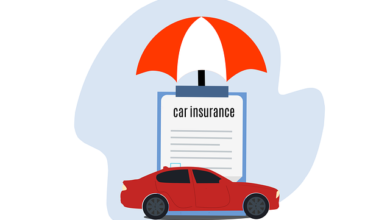Car Insurance Rates: What You Need to Know

Auto insurance provides indemnification for the car owner in case of an accident that occurs while using the car. Causing an accident when not insured is very costly normally running into tens of thousands of dollars.
Car insurance rates are part of your policy and matter greatly to you and your car. In learning how these rates are set you will be in a good position to get the required coverage at its best rate. Policygenius estimates that an average car insurance costs $1,128 per year or $94 per month.
What Are Car Insurance Rates?
Auto insurance costs are called rates that reflect the loss exposures for the period in consideration under your policy. While this term is quite close to the term “premium,” it isn’t quite the same thing. As stated by the California Insurance Department “the rates make up the components of the overall premium, where rates about some risks are often lowered in some instances while rates of other risks are often raised some more.” In other words, rates are applied to figure your premiums, which are the actual dollars you spend.
It is therefore important to understand a little about car insurance rates as well as their effects on the premiums.
Understanding the workings of your car insurance rate forms part of the managing process of your insurance. With it, one can forecast expenditure for a given period – whether monthly or annually — to help figure out ways of reducing expenditure.
Things That Influence Car Insurance Premiums
Car insurance costs risk factors comprise age, gender, credit score, clean record, specific make and model, geographical area, and the level of coverage you choose.
Personal Factors
It also explains that features like age, gender, or credit status also impact auto insurance rates. The Insurance Information Institute has it that teenage and male drivers are more vulnerable to being involved in accidents and hence charged higher rates.
Your credit score also has some influence on the insurance costs. Individuals with good credit scores are normally charged less as compared to other individuals since they rarely claim their insurance policies. The table below also shows how insurance premium rates can differ based on age and gender according to Policygenius.
By Age:
| Age | Yearly Cost |
| 16 | $6,779 |
| 17 | $5,868 |
| 18 | $4,931 |
| 19 | $3,822 |
| 21 | $2,708 |
| 25 | $1,929 |
| 30 | $1,706 |
| 35 | $1,654 |
| 45 | $1,583 |
| 55 | $1,463 |
| 60 | $1,449 |
| 65 | $1,494 |
| 70 | $1,585 |
By Gender:
| Driver’s Gender | Annual Cost |
| Female | $2,385 |
| Male | $2,574 |
Driving Record
Car insurance coverage organizations pay lots of attention to your driving records than anything when setting your rates. It is a fact that vehicles that maintained a record free of any ticket, accident, or DUI generally are qualified to get cheaper insurance premiums than their counterpart vehicles with ticket, accident, and/or DUI charges. These violations also influence the number and the severity of your premium rates in equal measure. Please find below the average cost of car insurance depending on several driving profiles according to Insurify.
| Driving Profile | Average monthly cost |
| Clean | $147 |
| One speeding ticket | $224 |
| One at-fault accident | $232 |
| Reckless driving | $248 |
| One DUI | $264 |
Vehicle Type
The type of car you own greatly affects the amount of money you will have to pay for insurance. In most cases, automobiles that require costly replacement parts will cost more in coverage fees. Moreover, the NZ Insurance Information Institute points out that insurers consider factors such as the rate of theft of your car model, your car’s engine size, and its safety record. Below, let us get acquainted with the data regarding average annual car insurance premiums depending on make and model.
| Vehicle | Average Annual Premium |
| Ford F-150 | $1,665 |
| Honda CR-V | $1,673 |
| Toyota Tacoma | $1,714 |
| Ford Escape | $1,735 |
| Subaru Outback | $1,744 |
| Nissan Leaf | $1,955 |
| Honda Accord | $1,990 |
| Chevrolet Bolt EV | $2,015 |
| Tesla Model 3 | $2,855 |
| Tesla Model Y | $2,884 |
Location
They also highly depend on your state and city and the difference between two Zip codes in the same city is not excluded. Insurance companies look at conditions like the affordability of houses in those regions, other aspects of living in such areas, and other hazards including weather, population density, traffic jams, accident frequency, and crime rates. If you live in a costly area, for instance, in Los Angeles or New York, you will be required to make high insurance premiums.
Moreover, they will also lead to higher premiums as people reside in areas with greater exposure to various risks, frequent in many urban centers. The following table shows the average annual car insurance rates per state.
| State | Yearly Cost |
| Alabama | $1,728 |
| Alaska | $1,393 |
| Arizona | $1,600 |
| Arkansas | $1,768 |
| California | $1,837 |
| Colorado | $1,852 |
| Connecticut | $1,856 |
| Delaware | $2,144 |
| District of Columbia | $1,802 |
| Florida | $2,794 |
| Georgia | $1,625 |
| Hawaii | $1,208 |
| Idaho | $1,094 |
| Illinois | $1,332 |
| Indiana | $1,215 |
| Iowa | $1,158 |
| Kansas | $1,532 |
| Kentucky | $2,181 |
| Louisiana | $2,531 |
| Maine | $1,096 |
| Maryland | $1,784 |
| Massachusetts | $1,553 |
| Michigan | $2,425 |
| Minnesota | $1,422 |
| Mississippi | $1,664 |
| Missouri | $1,588 |
| Montana | $1,902 |
| Nebraska | $1,617 |
| Nevada | $2,198 |
| New Hampshire | $1,284 |
| New Jersey | $2,225 |
| New Mexico | $1,460 |
| New York | $2,048 |
| North Carolina | $1,084 |
| North Dakota | $1,405 |
| Ohio | $1,008 |
| Oklahoma | $1,713 |
| Oregon | $1,443 |
| Pennsylvania | $1,672 |
| Rhode Island | $1,830 |
| South Carolina | $2,018 |
| South Dakota | $1,487 |
| Tennessee | $1,329 |
| Texas | $1,818 |
| Utah | $1,555 |
| Vermont | $1,047 |
| Virginia | $1,349 |
| Washington | $1,730 |
| West Virginia | $1,615 |
| Wisconsin | $1,109 |
| Wyoming | $1,394 |
Coverage Options
Here are some insurance products that add to your existing insurance to give you better coverage for any contingency. In short, if you go for more coverage, then automatically the premium would be on the higher side. For example, a $200/$300 single limit policy with comprehensive and collision coverage for your vehicle will cost less than a liability-only policy that meets the bare minimum requirement of the state. Directly underneath that, you will find the comparison of the annual costs of a regular full coverage policy and what is known as a liability-only policy.
| Coverage type | Average annual premium |
| Liability-only | $617 |
| Full-coverage | $1,638 |
How to find the best Car Insurance Rates
Comparing Quotes
One of the most helpful methods of reducing your premiums to their lowest amount is by comparing auto insurance quotes from an insurance broker or by visiting an auto insurance quote comparison site. Insurance companies have different ways of determining their cover charges and hence failing to compare can amount to paying for the wrong cover. Overall, it is recommended to make quote comparisons in every renewal, or at least annually.
But if you need to save money, read the article on the cheapest car insurance companies.
Bundling Policies
It will cost less if you get your insurance policies from a single insurance company rather than getting them individually. Some are that most insurance companies give steady customer rebates, and the most popular are home and auto insurance packages. Further, many companies also let you bundle other offerings like pet, or renters insurance, etc.
Keeping a clean driving record
To, at least, avoid higher rates do your best to keep a clean slate without accidents and violations. Accidents during the move cause worry and usually lead to an increase in the premium to be paid to the insurance company. If your driving record is not very clean, taking an authorized driving course might be helpful both for fine-tuning your driving and, as a result, you might be eligible for a lower premium.
Utilizing Discounts
When you buy a policy, providers put other special rates based on driving history and profile on the policy automatically. But it is wise to consult your insurer to determine whether you are eligible for other discounts, especially if you have not changed your policy for some time now. The most frequently offered rebates are those for fleet, student, association, and time-tested customers.
Adjusting Coverage Levels
Any form of insurance is better than having no insurance cover at all. What you may require is to adjust the policy where you stand to benefit by paying less for your policy. It is possible to obtain a car with mileage-based insurance or to try to decline some of the optional protections. In the case of a beneficiary, which is when you are cash-strapped, you might consider the viability of acquiring a liability-only policy, although this should be the last thing that you do.
Calculating Car Insurance Rates: How It Works
The rates at which auto insurance companies offer policies are founded on an evaluation of actuarial data and other risk analyses. All these lead to the adjustments in the premiums that are shown in the final quantity that you see in your policy.
Actuarial Data
Actuarial science uses statistics on a large pool of insured persons or objects to predict that a given risk is going to lead to a claim. For example, they look at such variables as accident and claims history, drivers’ age, type of car, and geographical region. These estimates form a foundation for creating first rates.
Risk Assessment
Whenever an insurer considers an applicant for Insurance, it will assess the probability of the policyholder filing a claim and the probability of the insurer losing money in the process of responding to the application. While actuarial analysis is based on groups, risk assessment is based on such risk factors as history of traffic violations, credit rating, and other characteristics. This makes the base rates obtained from the actuarial data refer to the risk levels of the person in question more appropriately.
Premium Adjustments
Accordingly, once specific individual rates are determined, insurers may apply further modifications as well on a number of variables which include; limit of liability, endorsements, deductibles, and all available rebates. They also adjust premiums over a certain period due to other forces such as inflation, among other factors, in the market. Such changes are necessary to maintain a fair and accurate premium rate that the consumers need to pay over that particular time.
Regional Differences in Car Insurance Rates
As previously mentioned, your location significantly influences your auto insurance rates for several reasons:
State Regulations
This makes the rates to be high since some of the states require drivers to maintain higher coverage levels than others. As, in no-fault states, the drivers are required to assume personal injury protection and/or medical payments.
Urban vs. Rural Rates
Insurance firms often give different premiums for those people living in urban areas as compared to those living in rural… In urban places, most drivers are more susceptible to divergent risks ranging from more frequent accidents to criminal activities, which makes insurance costs to their policies higher.





Such a wonderful article! I really appreciated the detail and clarity.
It was really interesting to read this!